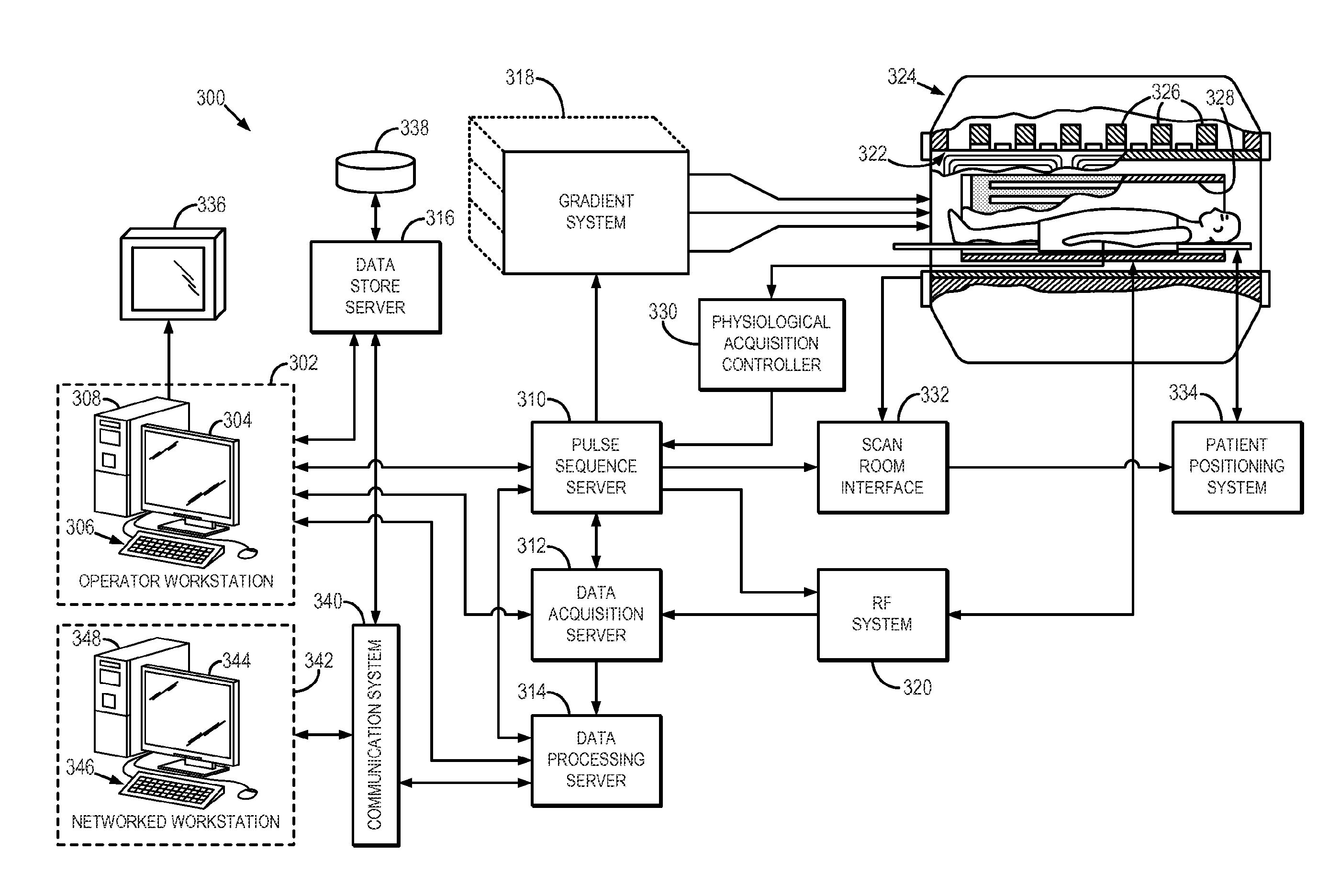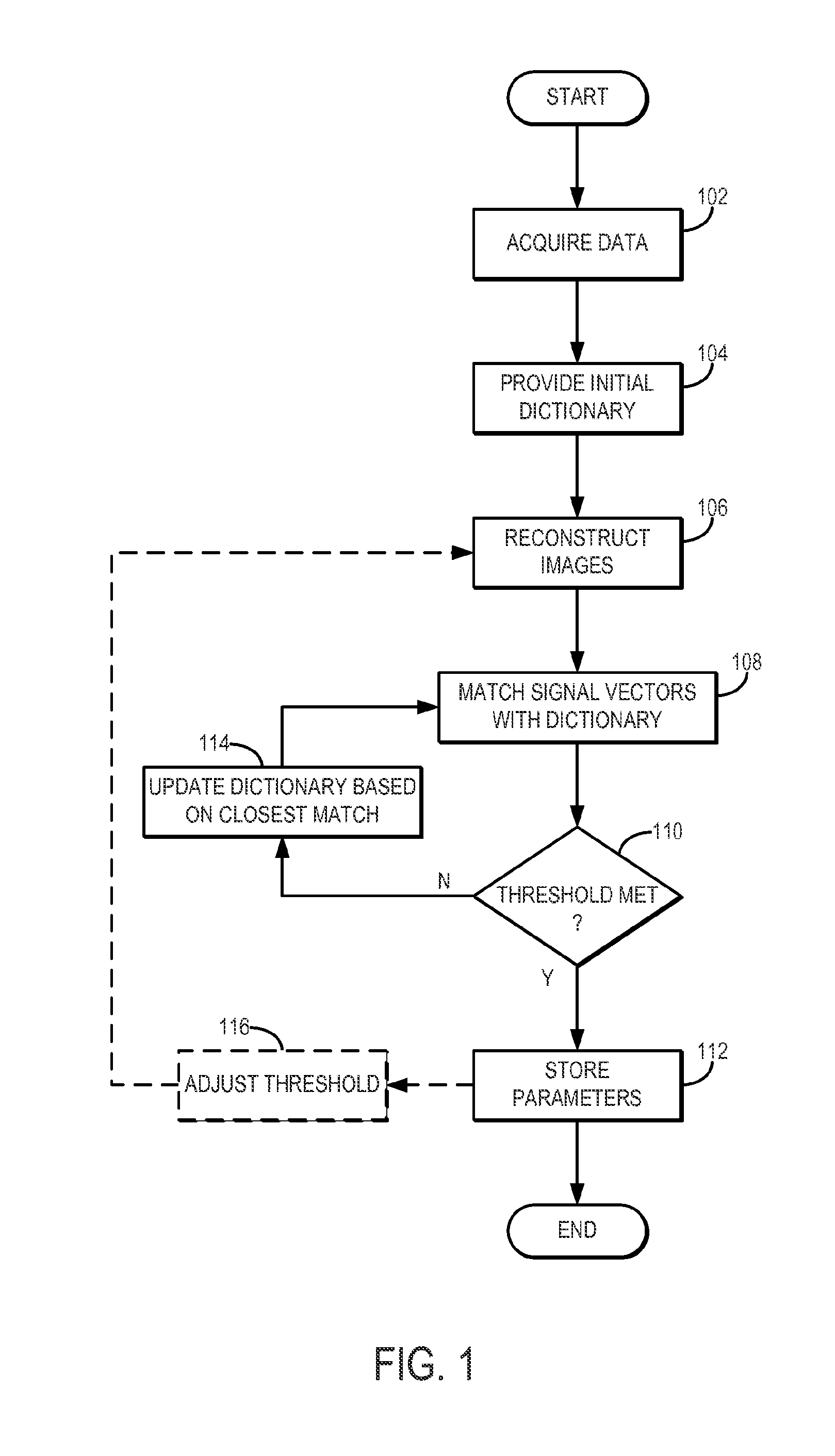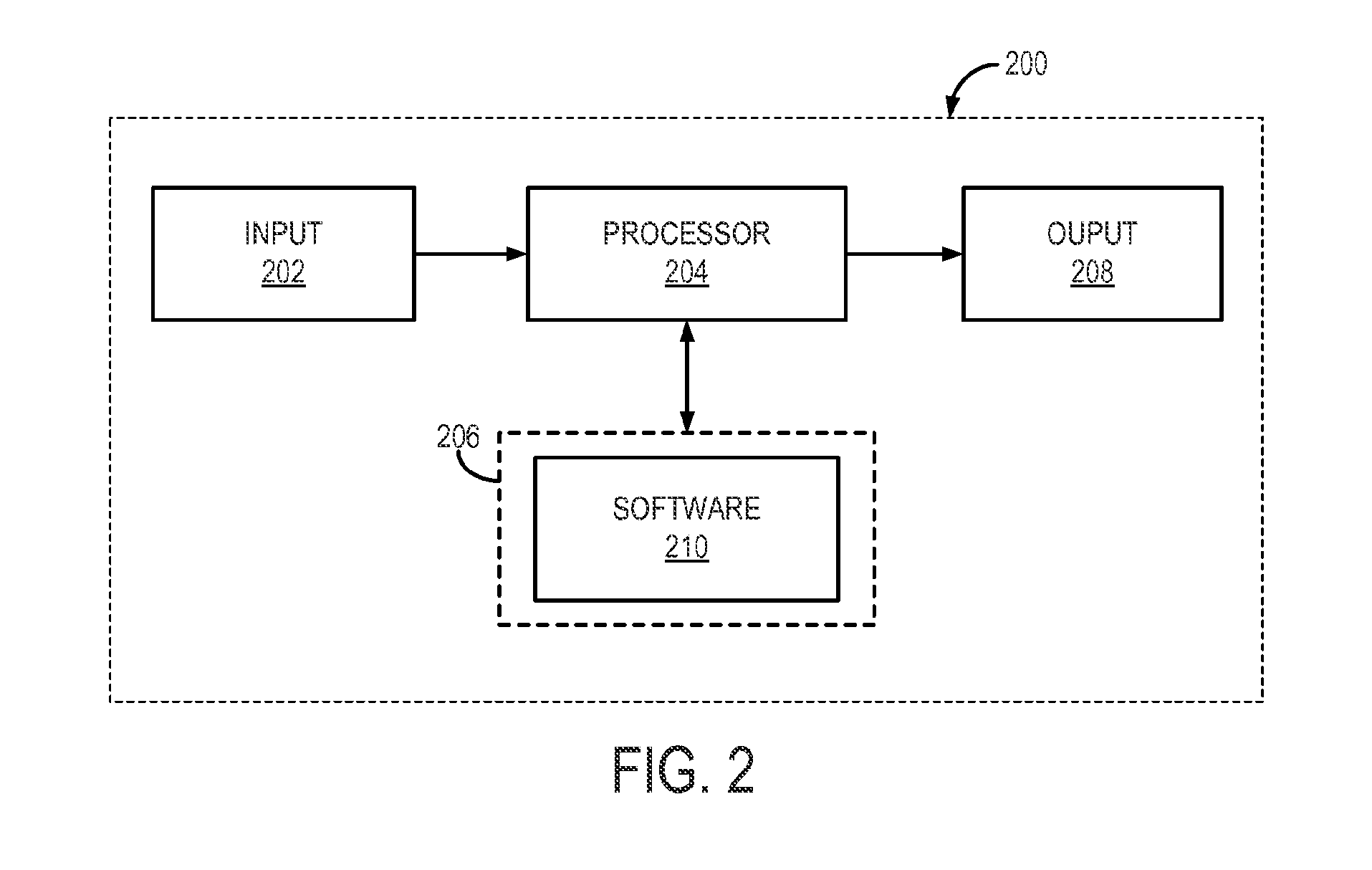System and method for adaptive dictionary matching in magnetic resonance fingerprinting
- Summary
- Abstract
- Description
- Claims
- Application Information
AI Technical Summary
Benefits of technology
Problems solved by technology
Method used
Image
Examples
Embodiment Construction
[0017]Described here are systems and methods for estimating quantitative parameters with magnetic resonance fingerprinting (“MRF”), in which acquired signal vectors are matched with a dictionary that may be, for example, efficiently used and adaptively generated.
[0018]In general, MRF techniques utilize a data acquisition scheme that causes signals from different materials or tissues to be spatially and temporally incoherent by continuously varying acquisition parameters throughout the data acquisition process. Examples of acquisition parameters that can be varied include flip angle, radio frequency (“RF”) pulse phase, repetition time (“TR”), echo time (“TE”), sampling patterns, such as by modifying readout encoding gradients, and the like. Preferably, the acquisition parameters are varied in a pseudorandom manner. As a result of the spatial and temporal incoherence imparted by the this acquisition scheme, each material or tissue is associated with a unique signal evolution or “finge...
PUM
 Login to View More
Login to View More Abstract
Description
Claims
Application Information
 Login to View More
Login to View More - R&D
- Intellectual Property
- Life Sciences
- Materials
- Tech Scout
- Unparalleled Data Quality
- Higher Quality Content
- 60% Fewer Hallucinations
Browse by: Latest US Patents, China's latest patents, Technical Efficacy Thesaurus, Application Domain, Technology Topic, Popular Technical Reports.
© 2025 PatSnap. All rights reserved.Legal|Privacy policy|Modern Slavery Act Transparency Statement|Sitemap|About US| Contact US: help@patsnap.com



